When you are in Indonesia, you should try some of the fruits. The taste can be different. Why is this different? Mostly it’s just very fresh because the fruits are local products of Indonesia. So when you are in Bali, Lombok or any other tourist destination in Indonesia, you should try the fruit. It’s healthy, tasty and when it’s the right season it’s very cheap
Recommended read: Boost your immune system with the fruits of Indonesia.
There is also an article about must-try food in Bali. Let’s go to the list of Indonesian fruits you should try.
Salak (Snake fruit)

This fruit grows on a species of a palm tree called Salacca or Zalaca. The English name is Snake fruit, is because of the skin it has. It feels scales and it is sturdy. To open such a fruit pinch the top and peel off the skin. The inside looks a bit like garlic, just bigger and with a different smell. The fruit can be crispy and a bit dry or crispy and moist. The taste is sweet with a bit acidic. When it is overripe the color is more yellow and a hint of alcohol smell is present. This fruit is fresh only in Indonesia as it is the only place where it grows. There are 15 different types of Salak.
The season for Salak is: February – March
Mango
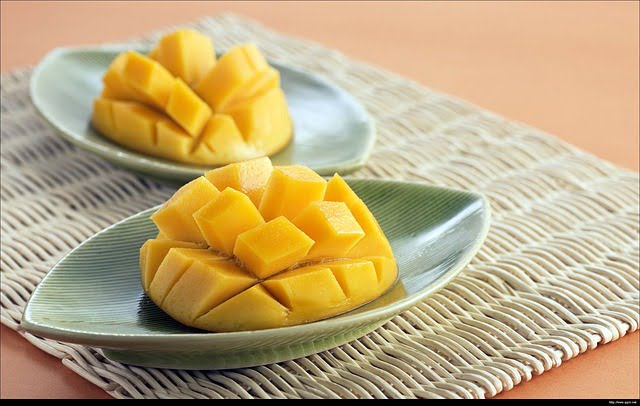
Like in most tropical countries, Mango grows in Indonesia as well. The mango here often has green or yellow skin and depending on the age of the fruit it will be white inside or yellow-orange. The yellow-orange kind is sweet, juicy and very delicious to most. You can make a delicious smoothie or juice from Mango fruit. If the mango is white on the inside, it’s very sour, this is used to make Rujak. Get some extra vitamin C while on your vacation with this fruit from Indonesia.
The season for Mango is from June – December, and most harvest is during the month of September. There is a huge seed inside mango’s
Mangosteen (Manggis)
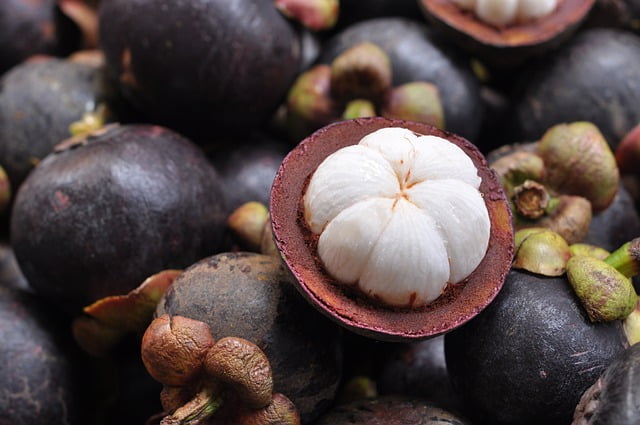
This is one of my seasonal favorites. Mangosteen has a sweet citric taste when it’s ripe. Bittersweet when it’s not that good. The outside should be purple to black color and could show signs of brown spots. The important thing is, the fruit is not hard and can be gently squeezed. The leaves on top should be green. This means it’s good to eat and they’ll be juicy and sweet. When opening, make a small dent with your thumb and twist the fruit. be careful that the red juices don’t spill on you. Inside are small black seeds, these are not edible.
The seasons for this mangosteen (manggis) in Indonesia is from December – March
Rambutan
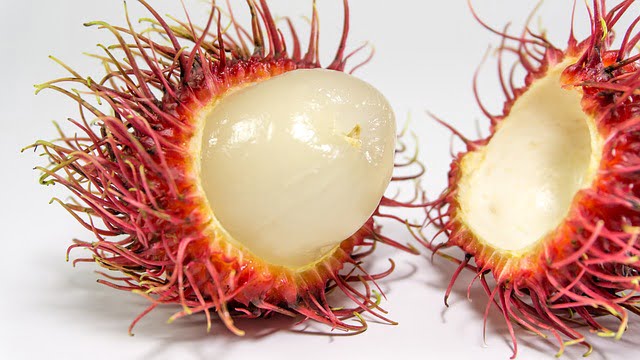
This fruit is hairy on the outside with different shades of red. The inside is jelly juicy like with a taste that comes close to a leechi. The inside has a seed, sometimes a wood like texture is given off from the seed to the center of the fruit. The seed is not edible. The fruit grows on branches of a tree. When you buy it, you will have a lot of thin branches with the rambutan attached.
The season for this fruit in Indonesia is from September – April
Pineapple (Nanas)
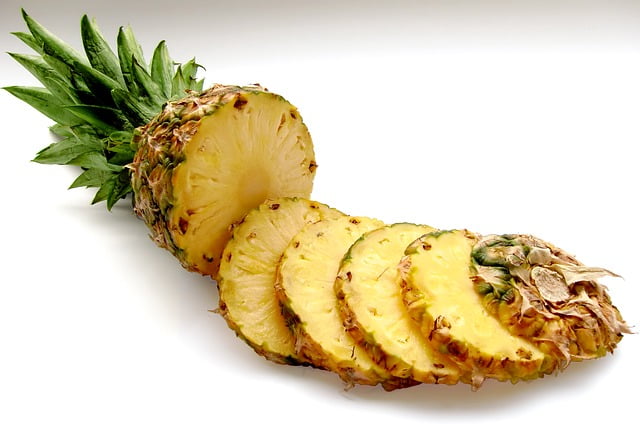
Pineapple is a popular tropical fruit. The taste can be a bit sour this means that it is prepared a bit too early (by days). In later stages, the fruit will have more sugar and it becomes sweeter. It’s too late when the fruit is becoming a bit bland, bitter or tasteless even. In Indonesia, the pineapple is a lot smaller than in other countries. The pineapple in Indonesia variety is called Nanas Palembang. Palembang is the city of South Sumatra where it grows. The fruit is available through the whole year but is harvested in December January.
Papaya
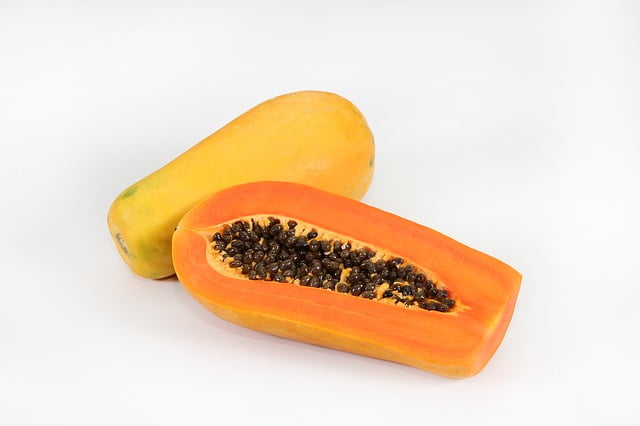
This was my first fruit in Indonesia I have eaten. It was a refreshing sweet delightful taste. It looked between orange and red. The hotel where I stayed made a decorative cut. This is a common fruit served at hotels
Banana (pisang)
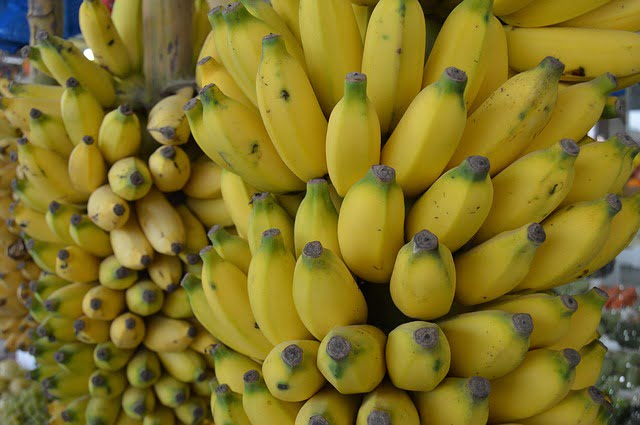
There are many different kinds of banana in Indonesia. They also vary from color when ready to eat. Some are green and sweet. You can feel from the skin when it’s ready, it’s ready when it’s soft. The green sweet banana contains less potassium but more sugar. Then there are tiny yellow bananas. These delicious Banana are gone in one bite. Some bananas are meant for cooking, they are bigger than normal. They are used to fry (pisang goreng) or to boil
Jackfruit (nangka)
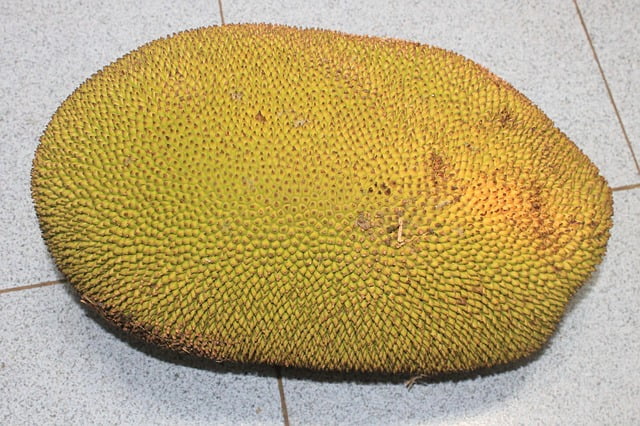
Jackfruit by Maya A. P from Pixabay
Jackfruit is a big fruit that is used for cooking in South East Asian dishes. Babi Guling often is complemented with boiled jackfruit. It gives a creamy taste, the texture is soft and tender. The seed can also be consumed.
The season for Jackfruit is between May – September
Durian
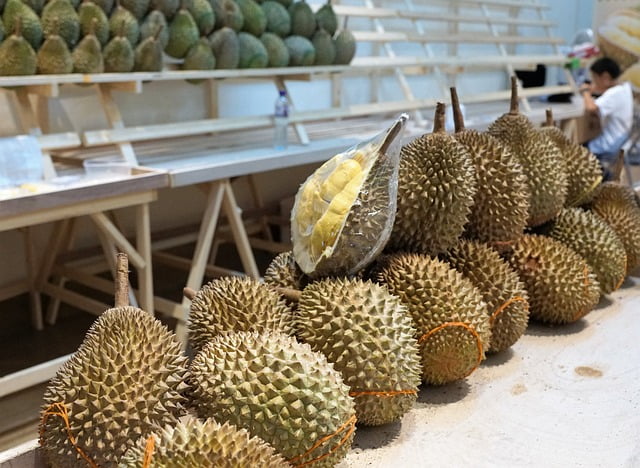
You probably heard about the stinky fruit called Durian. Some say it smells like (unwashed) feet, some say it smells like a stinky fart. This smell ain’t going away. During the season when it’s fresh it doesn’t smell like that at all. The smell is strong but very sweet when it’s fresh. When buying Durian, handle with care, the spikes hurt as they’re sharp and hard. Opening durian should happen outdoors, this fruit releases a strong odor.
I recently wrote an article about how to choose durian. It’s extensive information about this fruit, how I pick it out, and of course how to open an eat it.
When you taste this fruit for the first time I suggest to taste it fresh and do not take any expectation from “yukz, what a stinky fruit”. At that moment you will either find it strange and want some more to taste it better or you immediately dislike it. When you want some more, you already like it enough. Take care it’s very addictive. TIP: Do not bring Durian on an airplane.
Season for Durian is from October – February
Soursop
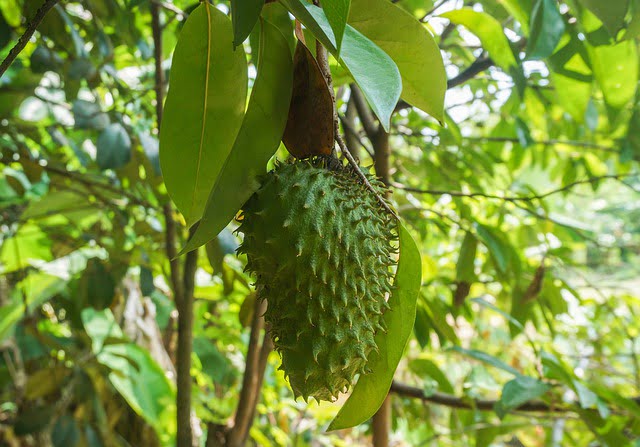
Soursop has its name already describing the taste, sour. However, it is also sweet at the same time. It’s high in antioxidants and vitamins. Take care of the seeds they’re not edible.
Often overshadowed by its spiky cousin, durian, the Sirsak has carved out its own reputation, not just for its delectable flavor but also for its rich array of health benefits. Besides the already mentioned uses in managing heart disease, liver conditions, arthritis, and asthma, sirsak is also hailed in traditional medicine for its anti-cancer properties.
Soursop contains of acetogenins, alkaloids, and quinolones in the fruit are believed to combat cancer cells and reduce the size of tumors. The leaves of the sirsak tree are often boiled and consumed as a tea, which is traditionally believed to strengthen the immune system.
The seeds of Soursop also have emetic properties, which can help in treating nausea and vomiting. So, the next time you’re sipping on that refreshing sirsak cocktail, remember – you’re not just treating your taste buds but potentially benefiting your health too.
Remember to always consult a medical professional before using fruits or plants for medicinal purposes.
The season is from June – September for Soursop
Starfruit
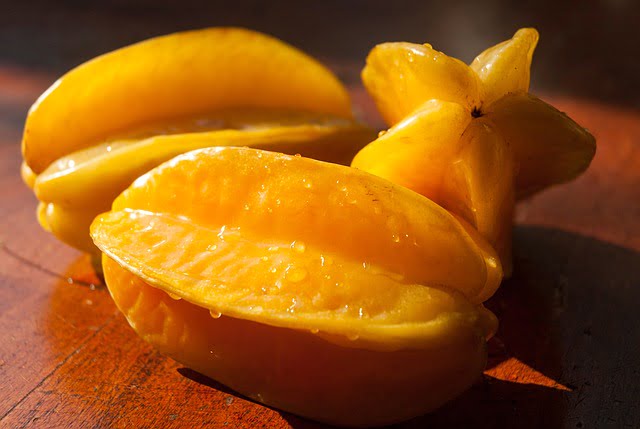
This fruit is also native to Indonesia (and some other countries). It’s a bit on the sour apple kind of taste. It’s something if you already like it. I have also consumed starfruit in some warm soups. The taste was more of the soup but it wasn’t that sour anymore. The texture is comparable with pear and apple.
Dukuh (Langsat)
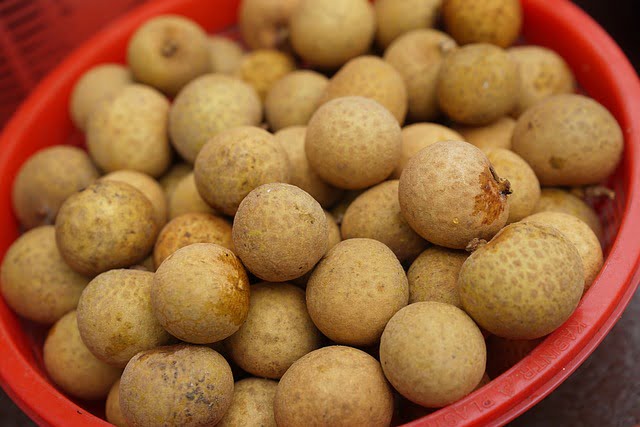
Dukuh (Duku), also referred to as Langsat, is a popular fruit in Indonesia that tends to grow in clusters and is found mainly on the islands of Sumatra and Java. Its appearance is somewhat similar to small potatoes, with its translucent, juicy segments offering a unique blend of sweet and slightly sour flavors. The fruit is often mistaken for Longan due to its visual resemblance, but the taste profile is distinct.
The outer skin of Duku is thin and easy to peel, revealing the juicy flesh inside. However, care should be taken while eating, as some varieties contain bitter seeds. Duku trees often bear fruit during the transition from the wet to dry seasons, making them a treat to look forward to during these periods.
Apart from being a delightful snack, Duku is also loaded with essential vitamins and minerals, especially vitamin C, which helps boost immunity. It’s not uncommon to find Duku being utilized in local desserts or simply enjoyed with a sprinkle of salt or chili to enhance its flavor.
When peeling off the skin there is a white fruit inside and a seed. Do not consume the seed. The taste is sour when it’s not ripe yet. But when it is ripe, it tasted like a candy with a tiny hint of cinnamon. I only had this a few times, so my taste buds might have been off. When I can I will definitely try this again in the future.
Lengkeng (Dimocarpus Longan)
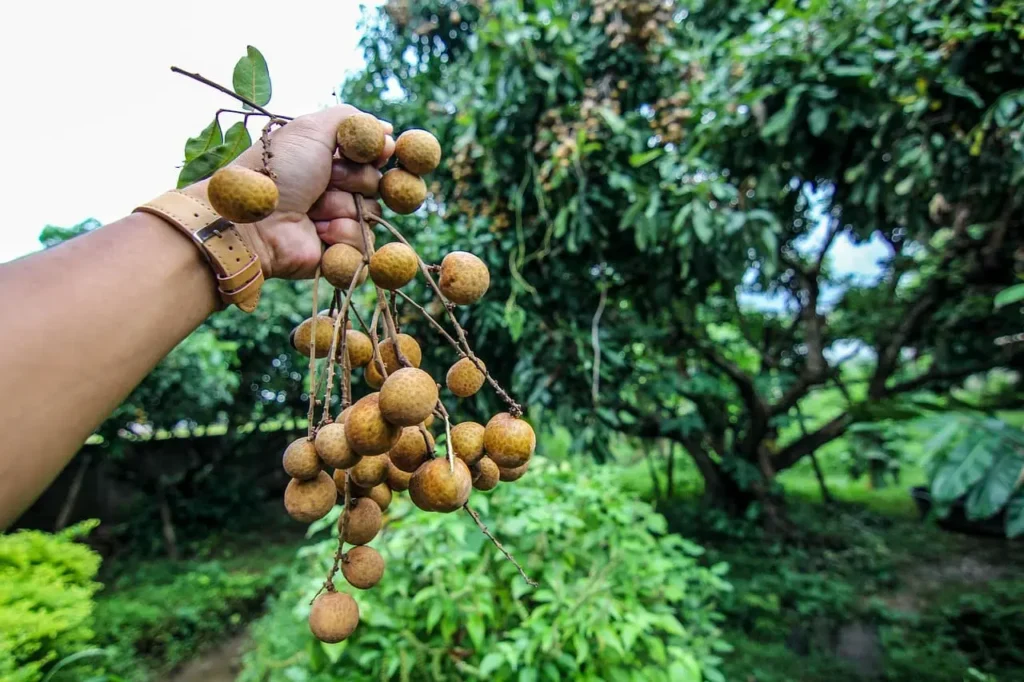
Lengkeng, more commonly recognized as longan, holds not just a delicious essence but also weaves a tapestry of tales from the Indonesian archipelago. Folklore whispers that this translucent gem of a fruit was once considered a symbol of love and romance. Lovers exchanged it as a token, cherishing the protective ‘dragon’s eye’ that would watch over their bond.
But it’s not just stories that keep Lengkeng pulsating at the heart of Indonesian culture. Dive into any local eatery or street-side stall during its season, and you’ll find delectable desserts starring this fruit. Lengkeng pudding, a translucent gelatinous treat with juicy whole longans, is a particular favorite among locals and tourists alike. There’s something magical about spooning into a chilled dessert, the delicate sweetness of Lengken
The season for Lengkeng (Dimocarpus Longan) is from September to April
Sawo Kecik

Sawo Kecik, a fruit found all over Bali, has a smooth skin. The fruit itself tastes like less juicy fresh plums. It’s also not a very dense fruit. Try it out, new tastes can bring pleasure. Who knows you will like this fruit.
Coconut
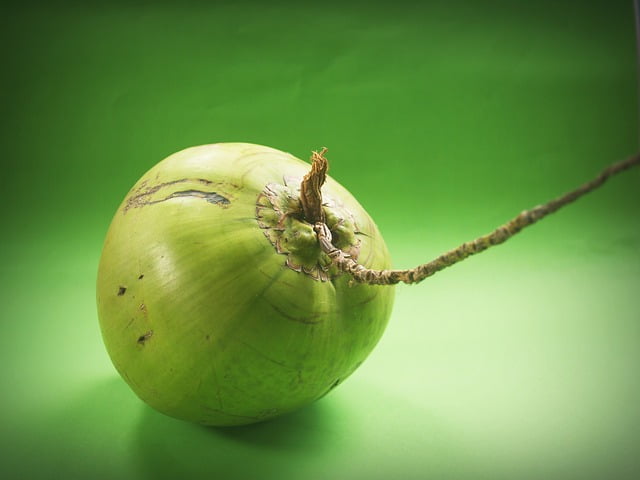
Young Coconut ( the green on like in the picture) is a refreshing delight. The Coconut water contains electrolytes, and clenches the thirst. Buy this drink somewhere on the street, or a warung. They’ll cut it open for you. When you’re done with drinking, cut it open (need a big tool for this), and you can scrape out the coconut meat. This is available throughout the whole year.
Pomelo
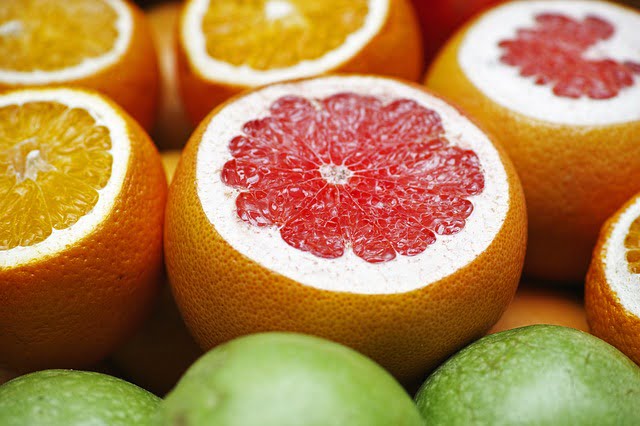
It looks like a grapefruit but tastes slightly different. The bitterness of the grapefruit is not there. This fruit can be as big as a coconut. You can taste it’s a citric kind of fruit and isn’t all too sweet. The fruit has a well-balanced taste when it’s ripe.
Dragon fruit
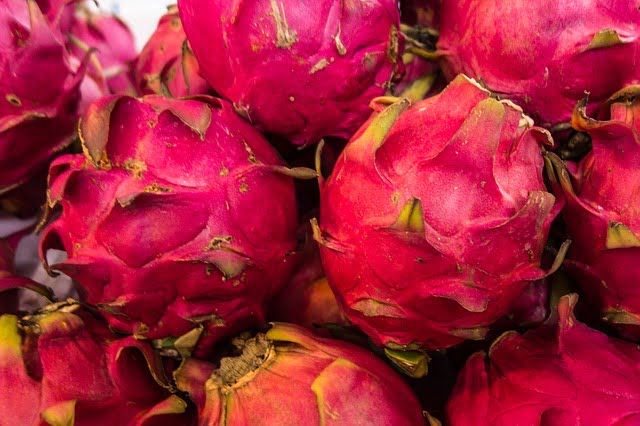
Last but not least the dragon fruit. This name sounds very cool, in fact the fruit even looks cooler! From the inside, it’s either white or purple. I have had it only purple only. The texture is like kiwi and the taste sweet, but not very sweet. This fruit does make the pee look purple when eating the purple version. It’s advantage when consuming is that it comes with a boost to your immune system, and it’s delicious to eat or drink as a shake.
The season for Dragon fruit is from December – May.
Tamarillo (Tree Tomato)
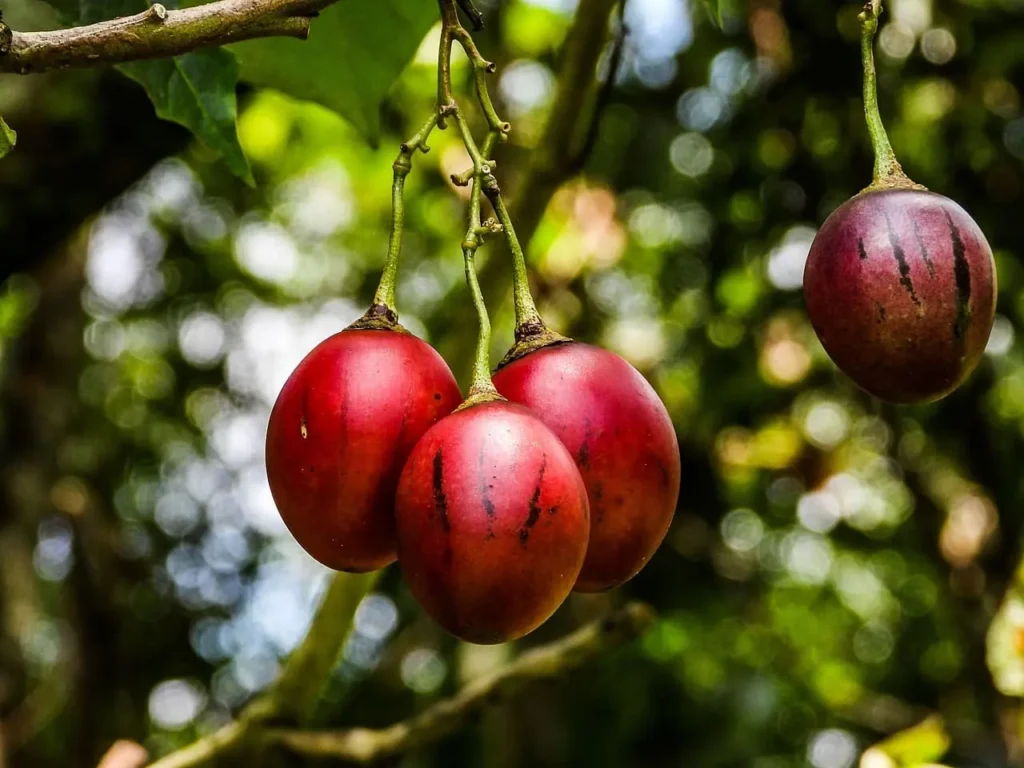
Often mistaken for a tomato due to its similar appearance, the tamarillo, also known as tree tomato, offers a unique taste experience you should not miss when in Indonesia. Originating from South America but widely cultivated in various parts of Indonesia, tamarillos come in both red and yellow varieties.
The season for Tamarillo fruit in Indonesia is predominantly from April to June.
What is your favorite fruit from in Indonesia?
Hi I am Dwi. I am a blogger, travel agent and a mom of a lovely daughter and wife to a supportive husband. I customize and plan tours in Bali and islands nearby for a living and have been doing this for more than 14 years. Get in touch via contact [at] taletravels.com
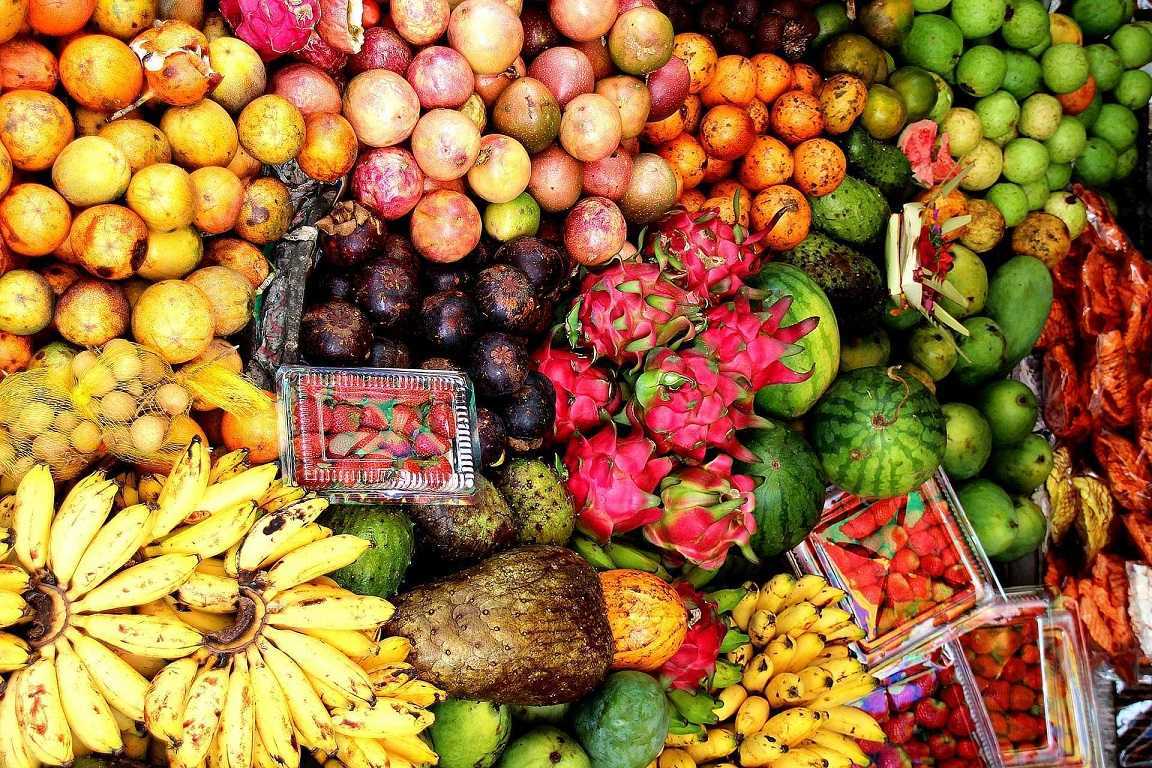
Thank you so much, nice to see such a post about fruit like this
Good list. Try describing what the fruit texture and flavour is like or make dot points so its easy to read/ wright into a paragraph. Surviveeeeeee
Thank you Juliet!
Excellent explanation. I am in Bali now from London for next four days with family and have only tried papaya, pinapple, banana. Bought salak today but still have not opened it to eat. Also want to try other fruits listed by you if possible. Kind regards
Hi Surendra,
I hope you are enjoying Bali very much. How do you like the local cuisine and fruits? what are your favourite spots? Is there anything Bali related you would like me to write about and that
Have a lovely holiday